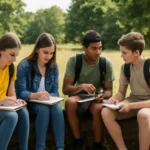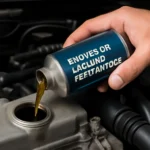How can middle school students benefit from suburban experience learning? Why should students participate in such programs? Explore examples, application processes, and benefits in this detailed guide.
Middle school education often focuses heavily on the classroom environment, but the value of experiential learning is becoming increasingly recognized. One highly effective form of experiential learning is suburban experience learning, where students are exposed to real-world learning environments outside the typical classroom. This guide will explore the concept of middle school field experience learning, examples of suburban experience reports, and the process of applying for such experiences.
Middle School Student Field Experience Learning
Field experience learning for middle school students is a powerful tool for broadening their educational horizons. It moves beyond traditional textbooks, providing students with a hands-on understanding of various subjects. Whether it’s biology lessons brought to life through forest hikes or history lessons made tangible through visits to local museums, these experiences deepen students’ understanding and foster a love for learning.
The Importance of Field Learning
Field experiences offer a unique opportunity for students to connect theory with practice. For example, a lesson on ecosystems can be brought to life by visiting a local nature reserve, where students can see the diversity of flora and fauna first-hand. This exposure encourages critical thinking and problem-solving as students engage with real-world examples of what they have learned in class.
Additionally, such programs provide invaluable life skills, including teamwork, communication, and adaptability. Students often work in groups to analyze data, observe their surroundings, or complete a project, enhancing their interpersonal skills in a real-world context.
Examples of Successful Field Experience Programs
A local middle school field trip to an agricultural farm allows students to understand where their food comes from and the science behind sustainable farming practices. In another example, students participate in a week-long coastal cleanup initiative, learning about environmental conservation and the importance of protecting natural habitats.
These programs are not only educational but also cultivate a sense of responsibility and connection to the world around them. They encourage students to appreciate different perspectives and take action toward positive change.
👉 Learn more about field experience learning 👈
Middle School Students’ Suburban Experience Learning Report
A suburban experience report is a formal document or presentation that outlines the learning outcomes, observations, and insights gained from a suburban field experience. Such reports help teachers, parents, and school administrators evaluate the educational value of these outings and track students’ progress in applying their knowledge.
What Should Be Included in a Suburban Experience Learning Report?
The report should begin with a clear description of the trip’s objectives. For instance, if the goal was to study local wildlife, the report should highlight specific species observed, their behaviors, and any relevant ecological information. Students are encouraged to document their personal reflections, discussing how the experience enriched their learning.
Furthermore, students should analyze how their field experience connects to classroom lessons. If they visited a historical site, they could compare the real-world findings to their textbook studies, providing a deeper understanding of historical events. Including photographs, sketches, and other visual aids can enhance the report, providing a richer context for their observations.
Structuring the Report
-
Introduction Brief overview of the experience and its objectives.
-
Main Observations Detailed analysis of what students saw, heard, and learned during the experience.
-
Connections to Class Material How the field experience connects to topics studied in class.
-
Personal Reflection Students reflect on what they learned and how it impacted their perspective.
-
Conclusion Summarize the key takeaways and suggest how the experience could influence future learning.
This structure encourages critical thinking and helps students process their experiences in a meaningful way. It also provides a clear record of learning outcomes for future reference.
👉 Discover more about suburban experience reports 👈
Middle School Student Suburban Experience Learning Application Form
For schools that offer suburban experience learning, applying for such programs typically involves filling out an application form. This form helps administrators assess the appropriateness of the program for each student, ensuring that they are ready for the challenges of learning outside the classroom.
Key Sections in the Application Form
-
Personal Information Basic details such as name, grade level, and contact information.
-
Learning Objectives A section where students outline what they hope to learn from the experience.
-
Teacher Recommendations Some schools require recommendations from teachers, ensuring the student is academically prepared for the experience.
-
Parent Consent A section for parents to approve their child’s participation, acknowledging any risks associated with the field experience.
-
Health and Safety Information Important for ensuring that students are physically prepared for outdoor activities.
Why is This Important?
The application form helps ensure that the students are ready to participate meaningfully in the field experience. By requiring students to reflect on their learning objectives and obtain parental consent, the school fosters a collaborative approach to the learning process. Additionally, health and safety considerations ensure that students remain safe while engaging in outdoor activities.
These forms often serve as a preliminary step toward planning logistics, including transportation and scheduling, ensuring that the experience runs smoothly.
👉 Learn more about applying for suburban experiences 👈
Conclusion
Middle school suburban experience learning is an invaluable educational tool that promotes real-world learning, personal growth, and a deeper connection to the environment. By engaging in field trips and reporting their findings, students gain a broader perspective on the subjects they study in class. The application process for these programs ensures that each experience is tailored to the individual student’s needs, enhancing their overall educational journey.
As educators, it is crucial to continue supporting these programs, recognizing the significant benefits they offer to both students and the community. As Albert Einstein once said, “Education is not the learning of facts, but the training of the mind to think.” Suburban experience learning is the perfect way to encourage this type of growth.






